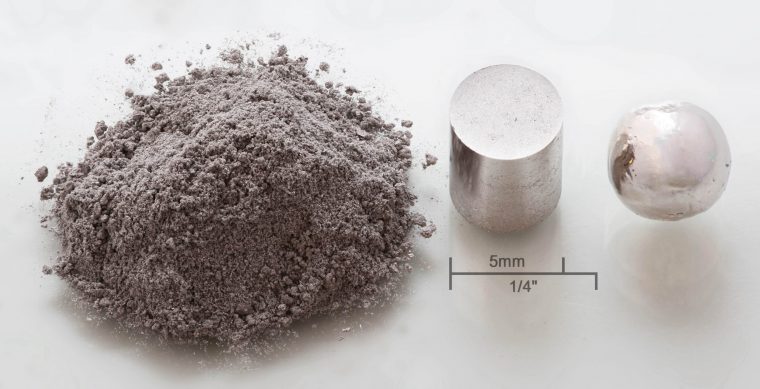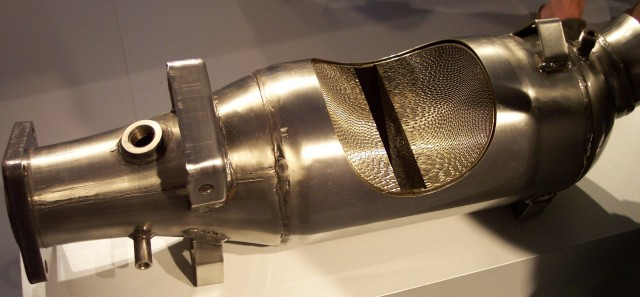Rh • Atomic Number 45
Rhodium
Rhodium is a silver-white precious metal that is extremely hard, durable, and resistant to acids. It belongs to the platinum group metals. Its electrical and thermal conductivity are higher than those of the other platinum metals. Rhodium is characterized by a high degree of light reflectivity and has a high melting point (1.964 degrees Celsius). In nature, rhodium occurs in its native form and is therefore recognized as a distinct mineral.
Rhodium is one of the rarest and most expensive metals in the world, more valuable than gold or platinum. Rhodium compounds are corrosive, highly toxic, and carcinogenic. Finely divided metallic rhodium, in the form of powder or dust, is easily flammable.
The precious metal is in high demand in industry, jewelry manufacturing, and high technology, with by far its most important application being in automotive exhaust catalysts.
Rhodium production is dominated by South Africa, where it is obtained as a by-product of platinum and palladium mining.
The largest source of rhodium is the Bushveld Complex. Sibanye-Stillwater, Anglo American Platinum, and Impala Platinum are the leading rhodium producers.
For the EU, the United States, Japan, and the United Kingdom, rhodium (platinum group metals) is classified as a critical raw material.
Rhodium was discovered in 1803 by the English chemist William Hyde Wollaston, who isolated the metal from crude platinum ore. The name rhodium is derived from the Greek word rhodon, meaning “rose,” referring to the rose-red color of some of its salts.
Because rhodium was extremely rare and difficult to obtain, it was initially used only for research purposes. The first practical application of the new metal appeared around 1820, when a rhodium–tin alloy was used for fountain pen nibs.
Its high corrosion resistance and brilliant appearance made it a sought-after coating for luxury goods and jewelry in the 19th century.
It was not until the 20th century that rhodium began to be used industrially, primarily in automotive catalytic converters.
Between 80 and 90 percent of all rhodium is used in the automotive industry for exhaust catalysts (three-way catalytic converters) to reduce emissions of harmful nitrogen oxides.
Metallic rhodium has a high reflectivity and is therefore also used as a coating in high-quality mirrors. These coatings are both extremely hard and chemically stable.
The metal is also used together with gold, platinum, and silver in the manufacture of jewelry and watches.
Jewelers value rhodium plating for its brilliance and protective qualities. Silver treated with rhodium becomes brighter, more durable, and does not tarnish when exposed to air. Rhodium is also essential for producing both white and black gold.
Although rhodium compounds are toxic and carcinogenic, the amount of rhodium used in certified jewelry poses no risk to human health.
High demand from the automotive industry, combined with its rarity, makes rhodium one of the most expensive metals in the world.

Rhodium: processing – 1 g powder, 1 g pressed cylinder, 1 g argon arc remelted pellet.
South Africa dominates the global rhodium market, accounting for 80 to 90 percent of world production. Rhodium is obtained as a by-product of platinum and palladium mining. The largest platinum deposit, the Bushveld Complex, is one of the most important sources of rhodium.
The key industry players are Sibanye-Stillwater, Anglo American Platinum, and Impala Platinum, with Anglo American Platinum—part of the Anglo American Group—being the world leader.
Outside South Africa, Norilsk Nickel in Russia is the largest rhodium producer.
Global annual production is estimated at around 24 tonnes.
Rhodium is often replaced by other materials due to its high price and limited availability. Palladium serves as a substitute for rhodium, particularly in the jewelry industry and in catalytic converters.
Critical and Strategic Metals



